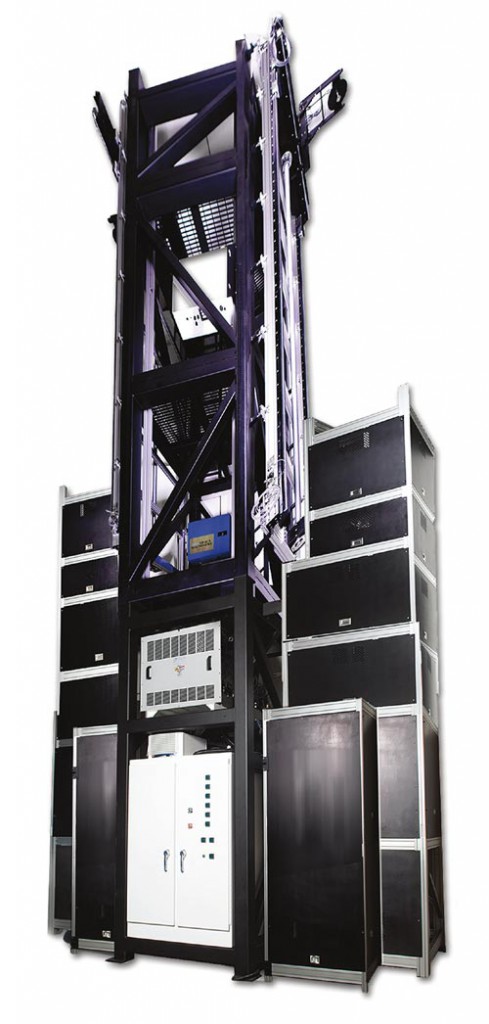
ASI/SILICA Machinery’s Dual Clad Sintering Systems are designed to provide quality drying and consolidation of silica soot preforms. When used in combination with the other core making and preform making equipment available from ASI/Silica, preforms can be made that can be directly drawn into optical fiber.
The Clad Sintering Systems are a reliable, repeatable, automatic production source for high temperature silica processing in a controlled atmosphere. With a unique ground loading capability, the systems provide both easy and safe operating conditions.
The Dual Clad Sintering System comprises two completely independent sintering systems located on opposite side of the same 13 meter tall tower. This dual sinter configuration maximizes the efficient use of floor space.
FURNACE DESIGN
The upper furnace provides multiple heating zones enabling maximum flexibility and precise control of temperature gradients within the system, for optimum drying of soot preforms. It features high quality insulation, designed for power efficiency.
The lower furnace is constructed with a round firebox design and high technology insulation, and the 1800o C long life heating elements are replaceable in-situ. This unique design is both powerful and highly efficient, providing both lower operating costs and a fast heating rate.
GAS DELIVERY SYSTEM
The gas delivery system is made of electro-polished 316 stainless steel components, assembled in a class 10 clean room environment and equipped with sub-micron filters to ensure the highest level of purity. The gas delivery system incorporates a series of computer controlled mass flow controllers and pneumatic diaphragm valves. The gas delivery system is leak tested to a level of 1×10-8 std cc/sec.
COMPUTER CONTROL SYSTEM
The Clad Sintering System is controlled by an industrial PC which controls and monitors all motors, temperatures and gas flows. The system operating software is graphical in nature and easy to use, allowing both manual or fully automatic control. Automation of the preform drying and consolidation process is easily managed by the creation of powerful and flexible command-based recipes. Process run data is continuously displayed on the screen for easy monitoring during operation, and is automatically stored on the hard drive for later analysis.
